Penguin Books and the Royal Navy: From Typography to Torpedoes
- View news filtered by: Second World War
- View news filtered by: Navy Organisation
- View news filtered by: Submarine Service
- View news filtered by type: Blog
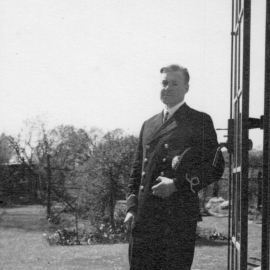
Part 2: Ruari McLean
In our last blog post, we explored the unexpected role of a submarine commander in the creation of the Penguin Books logo. But as it turns out, Edward Young wasn’t the only man to trade book covers for periscopes. Another key figure in Penguin’s early design legacy, Ruari McLean, also took a detour from publishing to serve on submarines during the Second World War.
When war broke out, McLean, like many young men of his generation, set aside his civilian ambitions whilst working at Shakespeare Head Press. McLean kept diaries, often annotated with sketches, throughout his life and in them he details the doubts that he held about entering the armed services:
“For the sake of posterity I will record my entry in this war. After 3 months painful thought I registered, when called upon (conscripted) by the King on Dec 9th, as a conscientious objector […] it broke up the happy house. Mother wept, Father said that he would join up himself under a false age […] I wrote and cancelled it. At the medical exam I opted for the Royal Navy.”
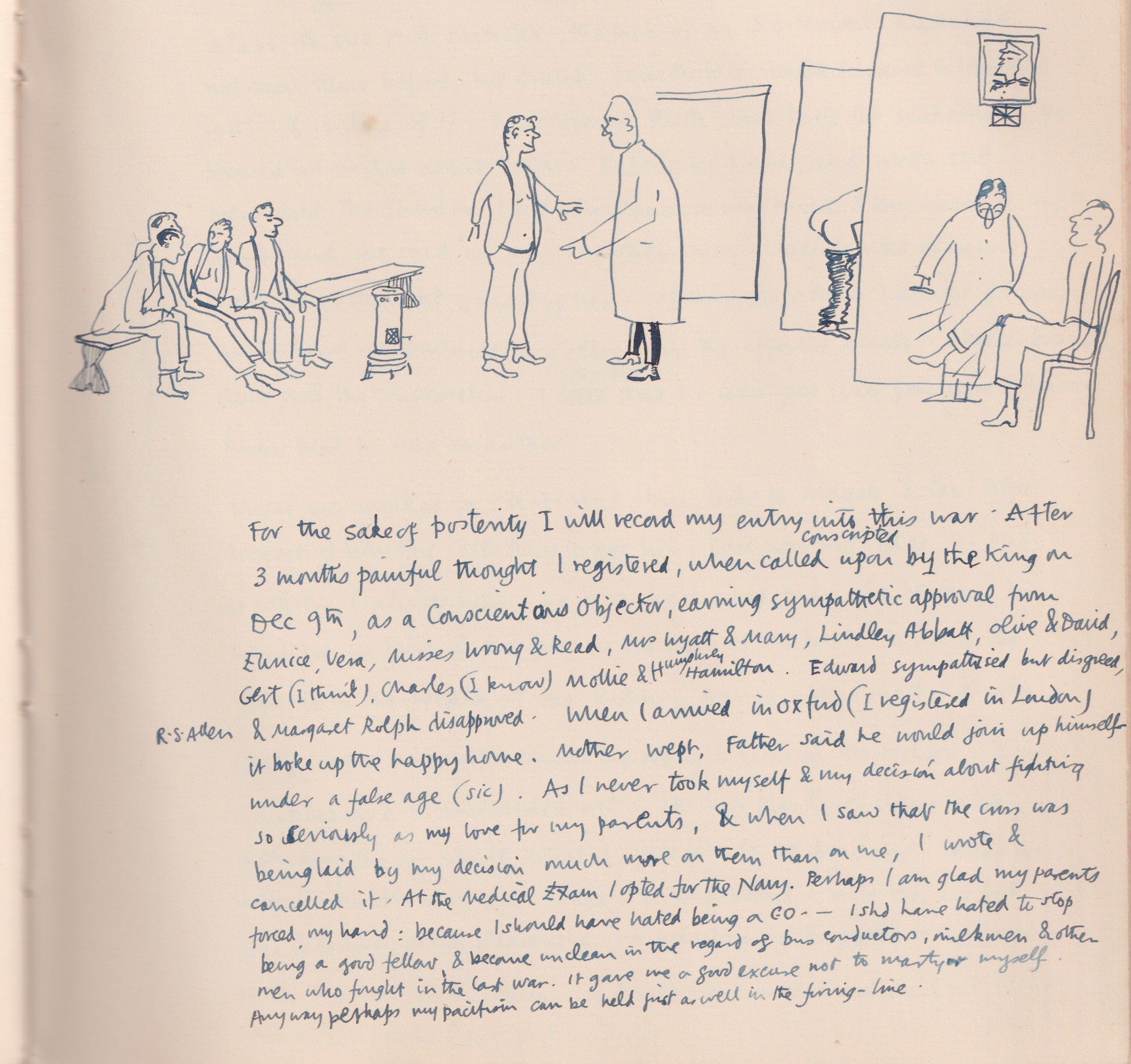
McLean Joins the War Effort
Despite his initial misgivings, McLean joined Naval Intelligence as a Wireless Officer. He first served on HMS Windsor as a Telegraphist and then transferred to the Submarine Service, where he became a British Liaison Officer on the Free French submarine, Rubis, whose duties were laying mines off Norway. His role was to look after the secret code books and decode wireless signals.
His diaries and sketches give us a detailed insight into daily life on the submarine. He later published these in his book ‘Half Seas Under’. The National Museum of the Royal Navy holds the original illustrations.
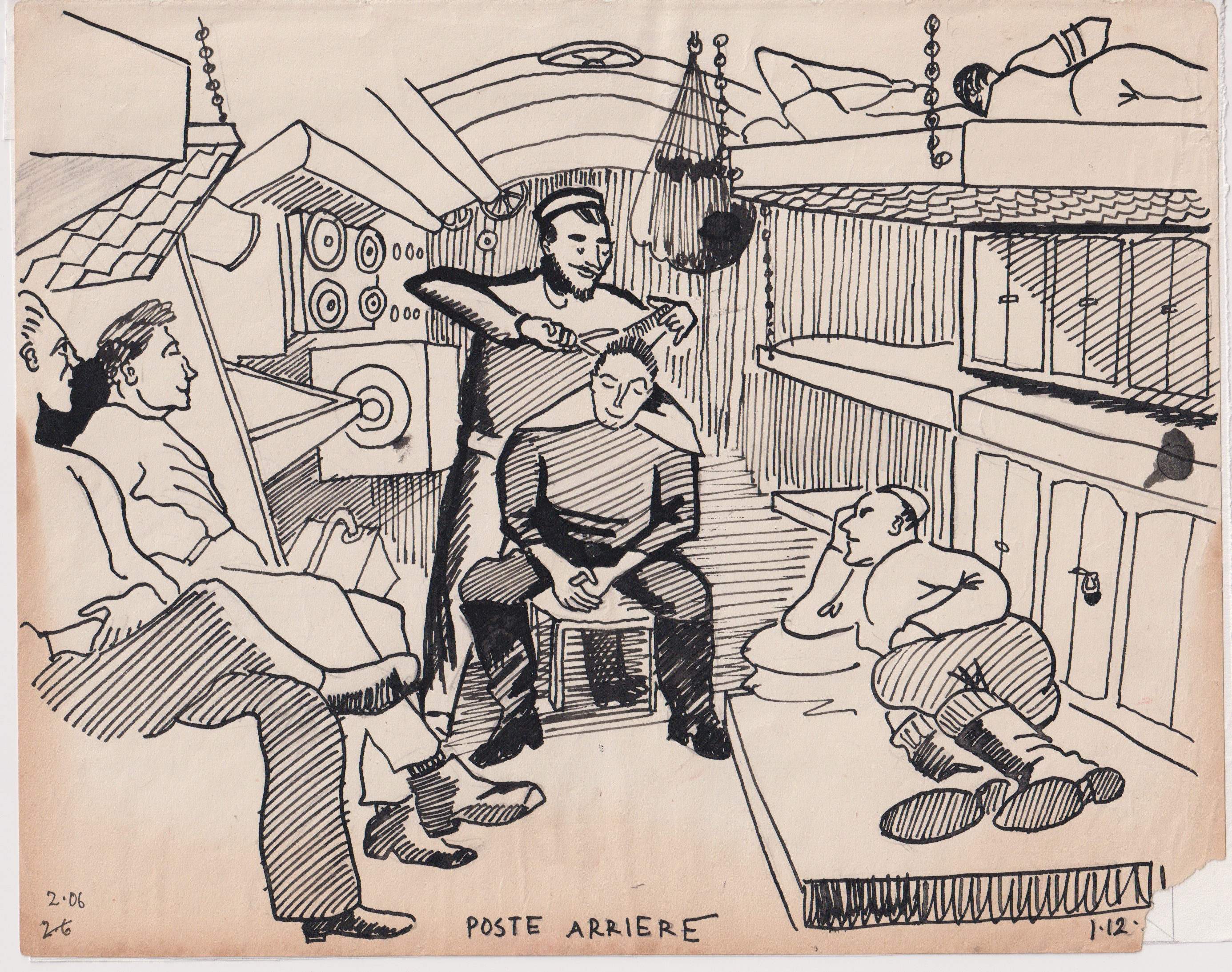
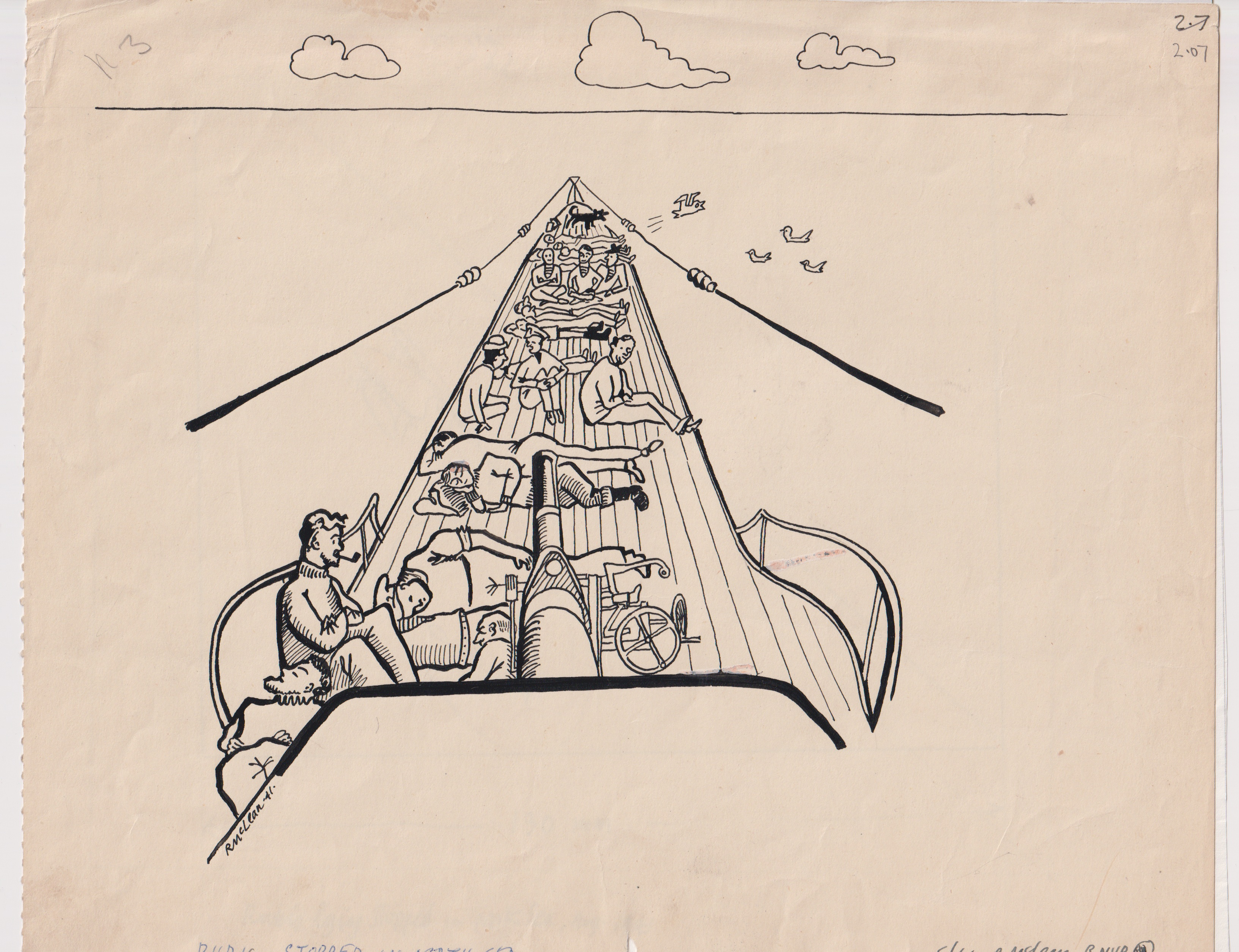
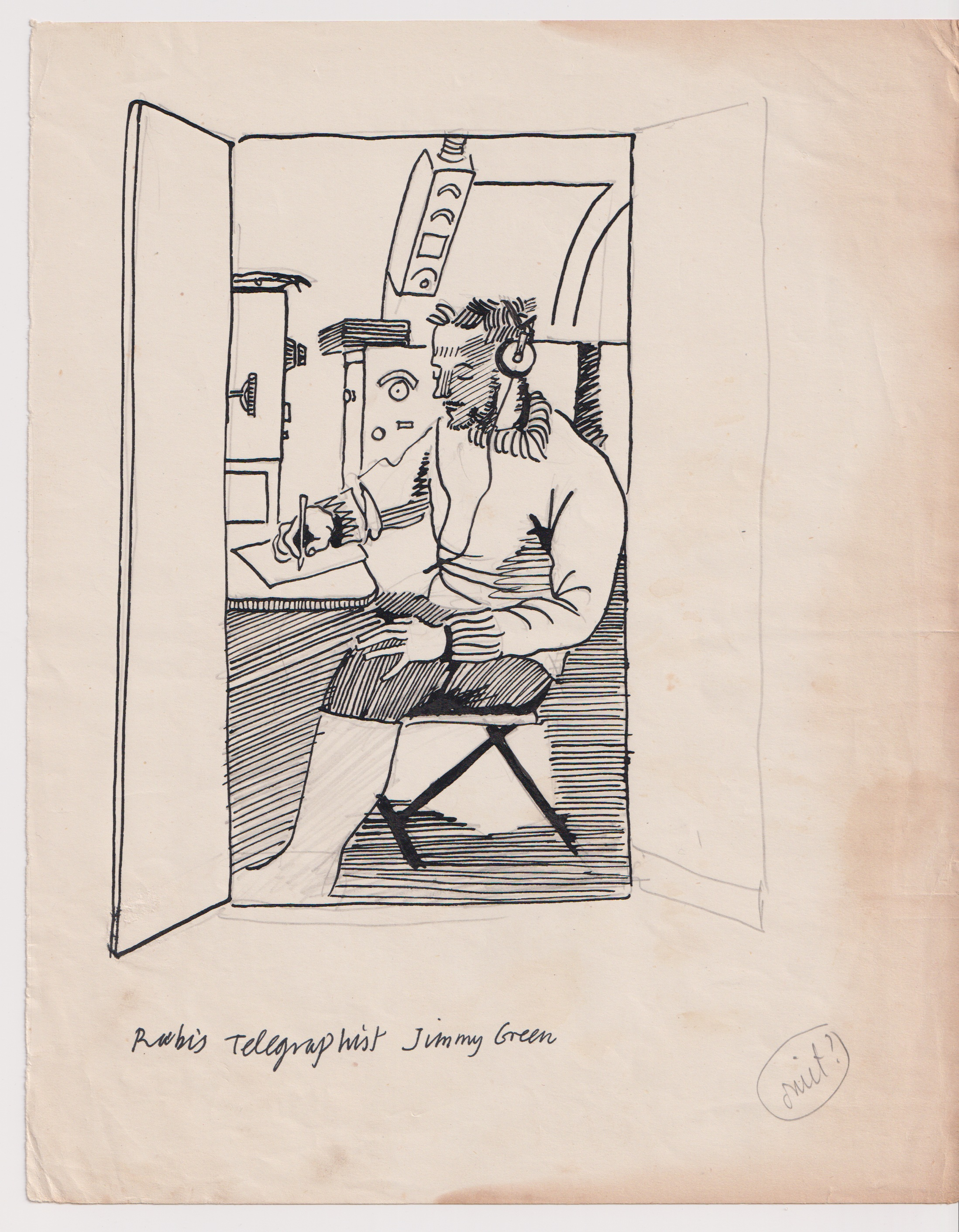
Life as a submariner was clearly not as bad as he expected:
“I soon realised that I had been very lucky in being posted to Rubis. Of all the Allied submarines in Dundee, she had the best chef, and there was vin rouge every day; not as a luxury, but as a normal French ration. I do not know where it came from, or what genius of a victualling officer managed to secure a constant supply of it, but I do know that although we sometimes sailed without mines, we never sailed without vin rouge.”
Ruari McLean in his naval biography, ‘Half Seas Under’.
Special Ops
From 1943, McLean was attached to Combined Operations Pilotage Parties, a top-secret unit involved in daring expeditions on enemy beaches, landed from submarines in canoes or towed by motor launches. He joined 'Naval Part 735', the cover name for his secret unit, joining COPP 7 as second in command. He served for more than a year in East Asia, conducting dangerous reconnaissance surveys of Japanese-held beaches in Burma and Sumatra.
“Reconnoitring and surveying would have to be done at night. It meant finding the right beaches, and surveying them, their approaches, their gradients, their textures and bearing capacities, their above water and under water defences, and their exits. Marking them meant merely finding them again with complete accuracy and remaining there, signalling the way in to our forces, without being detected by the enemy.”
Ruari McLean on the purpose of the COPPS, 25.5, ‘Half Seas Under’, hand annotated manuscript, ref: NMRN 2020/27/9.
His diaries list the equipment issued for these operations.
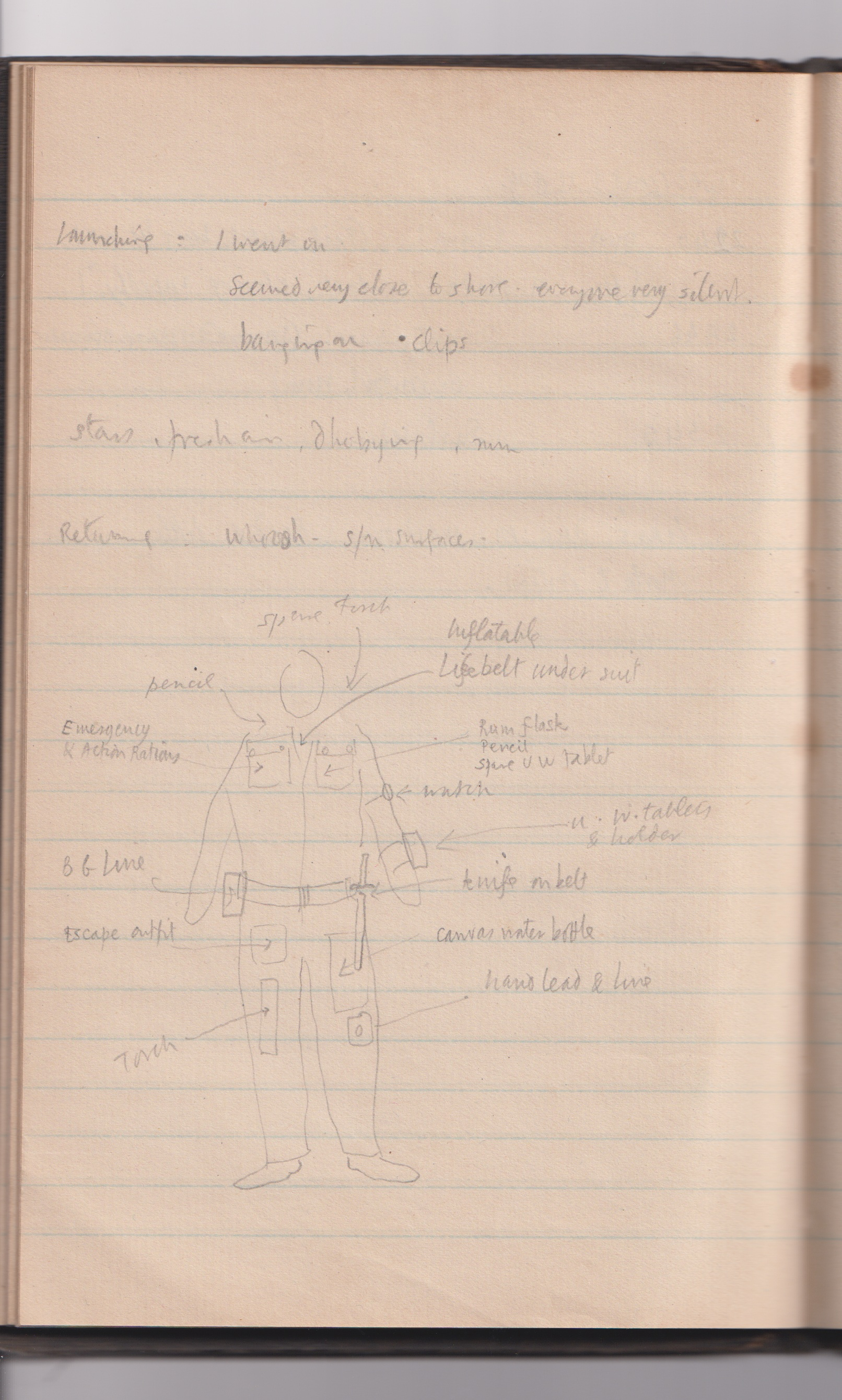
Operating from such small craft behind enemy lines was an extremely dangerous task:
“Failure meant death by drowning or capture by the enemy: and to be captured or to leave any trace at all of our existence would prejudice the success of subsequent operations involving thousands of lives.Experience taught us early that the danger of detection by the enemy was negligible compared with the danger from the weather; the initiative always rested with us, as intruders, and we would be poor at our job if we ever allowed ourselves to be detected. But wind, sea and tide could be enemies with whom we had to reckon more seriously. The first COPP parties, anxious to justify themselves and at last do the job for which they had been training, launched themselves in weather which made success impossible; and four valuable officers were drowned.”
Ruari McLean on the purpose of the COPPS, 25.8, ‘Half Seas Under’, hand annotated manuscript, ref: NMRN 2020/27/9.
His service gained him several medals. He was awarded a Distinguished Service Cross for 'skill in Command' during the clandestine reconnaissance missions, during which time he also saved the life of his commanding officer Geoffrey Hall.
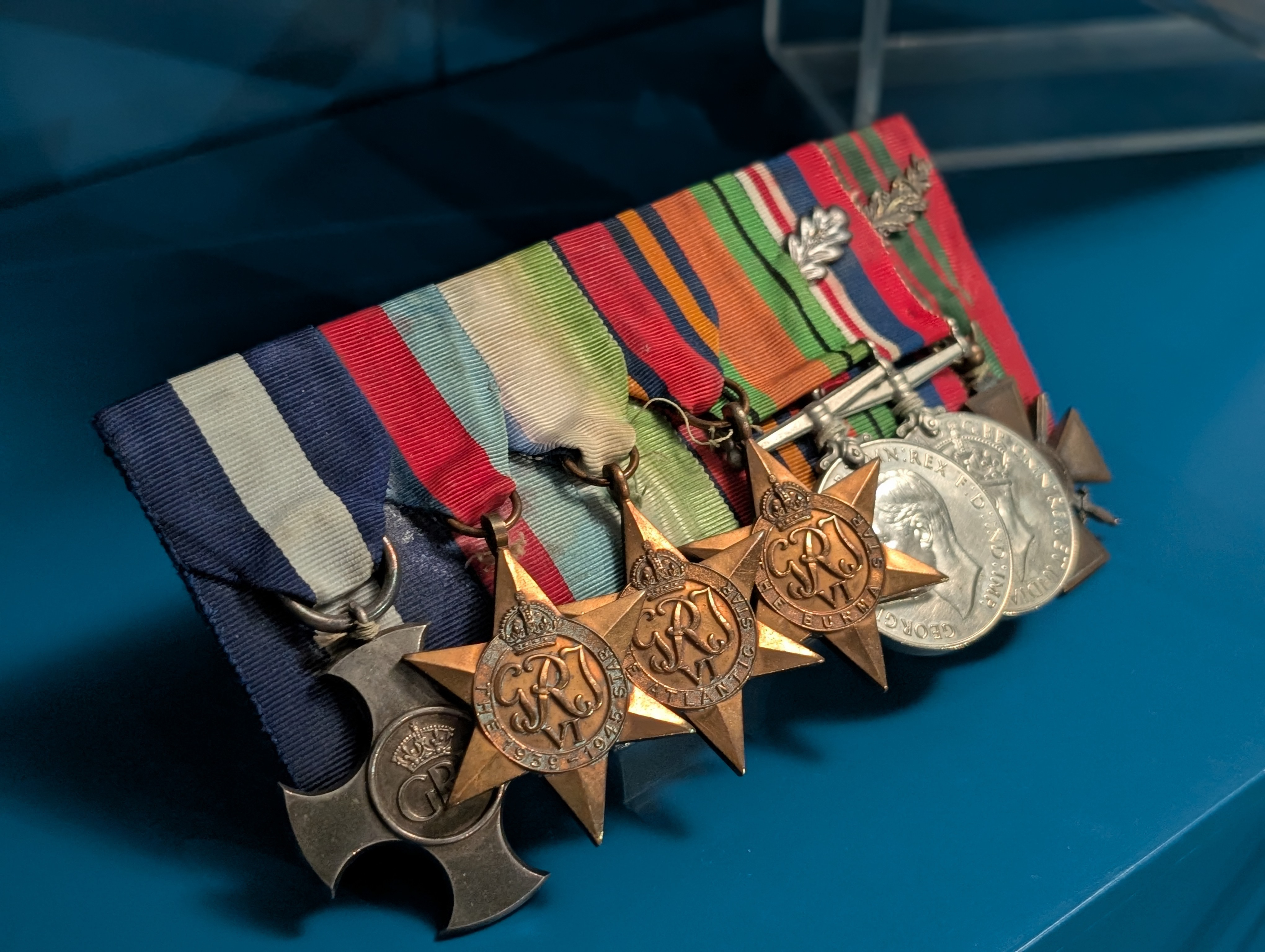
These medals are on display, along with a Bodkin/Nail dagger that was part of his COPP equipment and a photograph album that he compiled on COPP teams 7 and 8 in the Cloak and Dagger case in the Submarine Museum, Gosport.
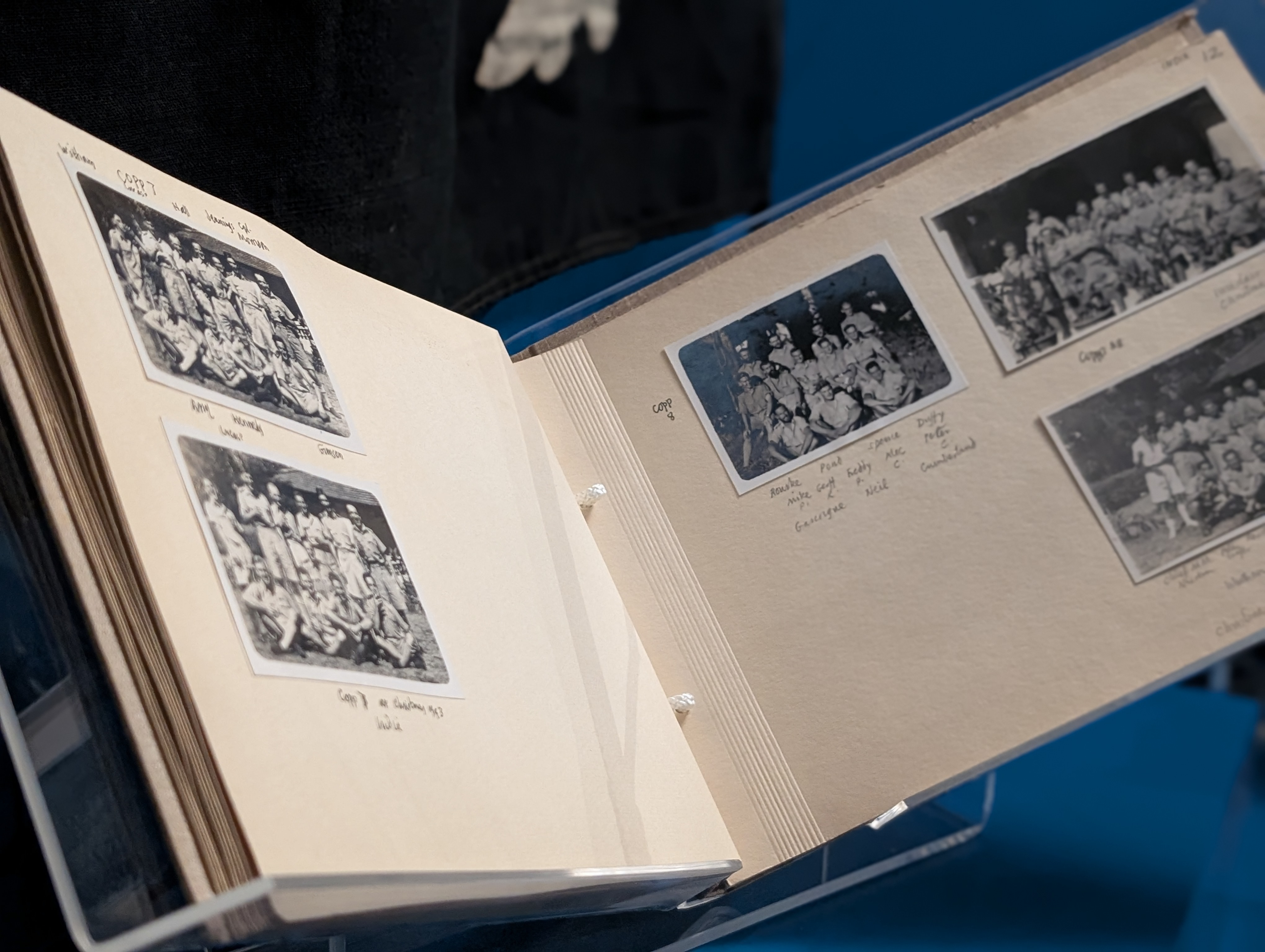
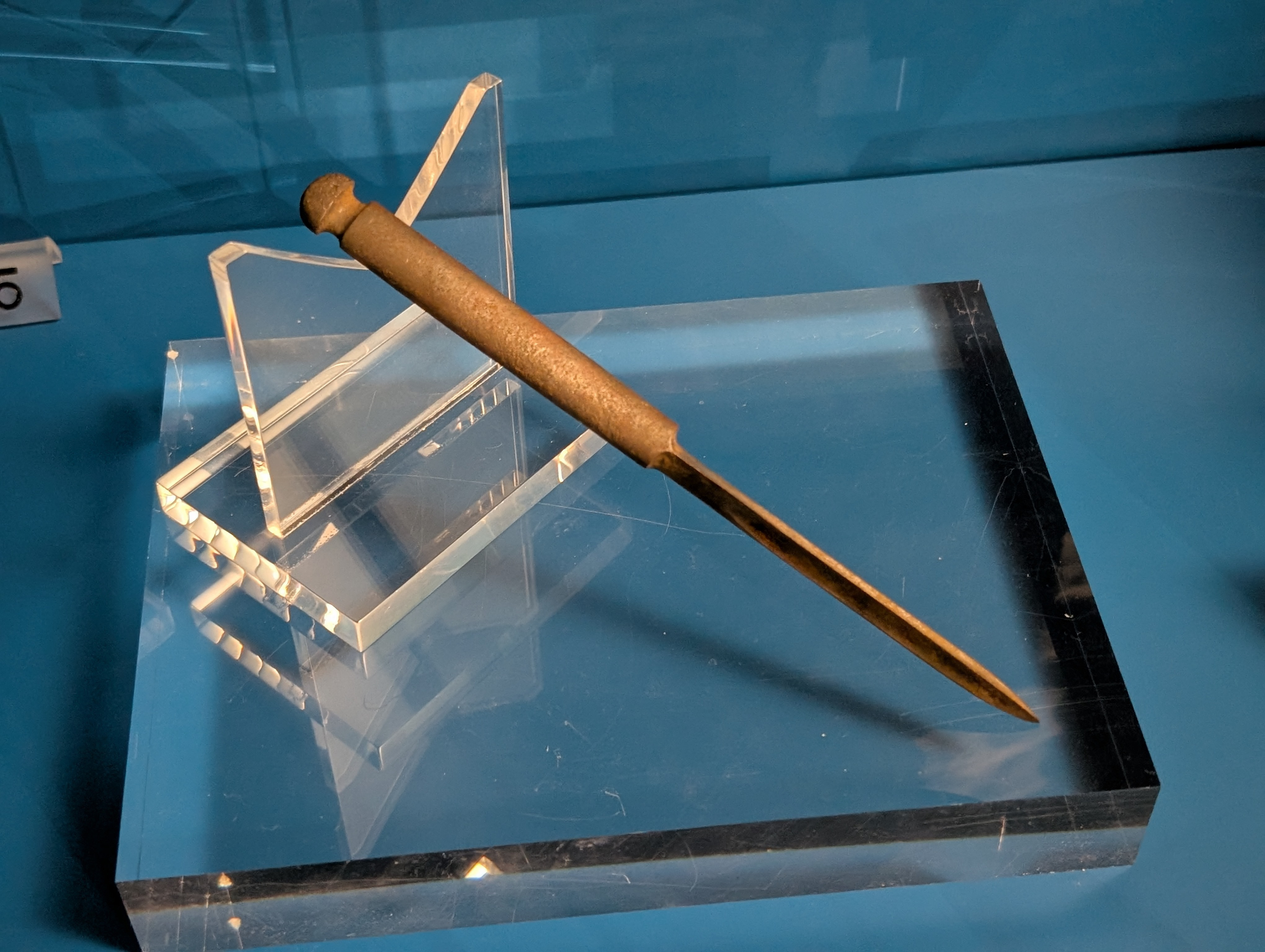
After the Second World War
Through his naval career, he forged a friendship with fellow submariner Edward Young (who drew the logo for Penguin Books) and they became roommates. This facilitated an introduction to Young’s previous employer and after the War McLean joined Penguin Books in 1946. He had special responsibility for design of the Puffin range (children’s books), bringing in designer Jan Schichold to establish typographic consistency. McLean played a crucial role in standardising how the books looked and creating a uniformity that stood out on shelves and helped make them instantly recognisable to readers.
Later he advised HMSO and was awarded the CBE in 1973 for services to typography.
So next time you pick up a vintage Penguin paperback, you might see it differently; not just as a smart piece of design, but as the legacy of men who showed their passion for books throughout their careers.
His diaries and sketches can be viewed by appointment by contacting the Collections Access Team on collections.research@nmrn.org.uk.
To discover more rich stories from the Submarine Service visit the Royal Navy Submarine Museum in Gosport, included in an Ultimate Explorer ticket.
Sources:
The diaries of Ruari McLean, ref NMRN 2020/27 - National Museum of the Royal Navy archives
Obituary of Ruari McLean, The Guardian 2002. Accessed 25/06/25
https://www.theguardian.com/media/2006/apr/07/pressandpublishing.guardianobituaries
Lewis, Jeremy. Penguin Special: The Life and Times of Allen Lane, Penguin Books 2006.
Top image: Ruari McLean in Royal Naval Volunteer Reserve uniform at his home in 1941. Ref: NMRN 2019/124/14.